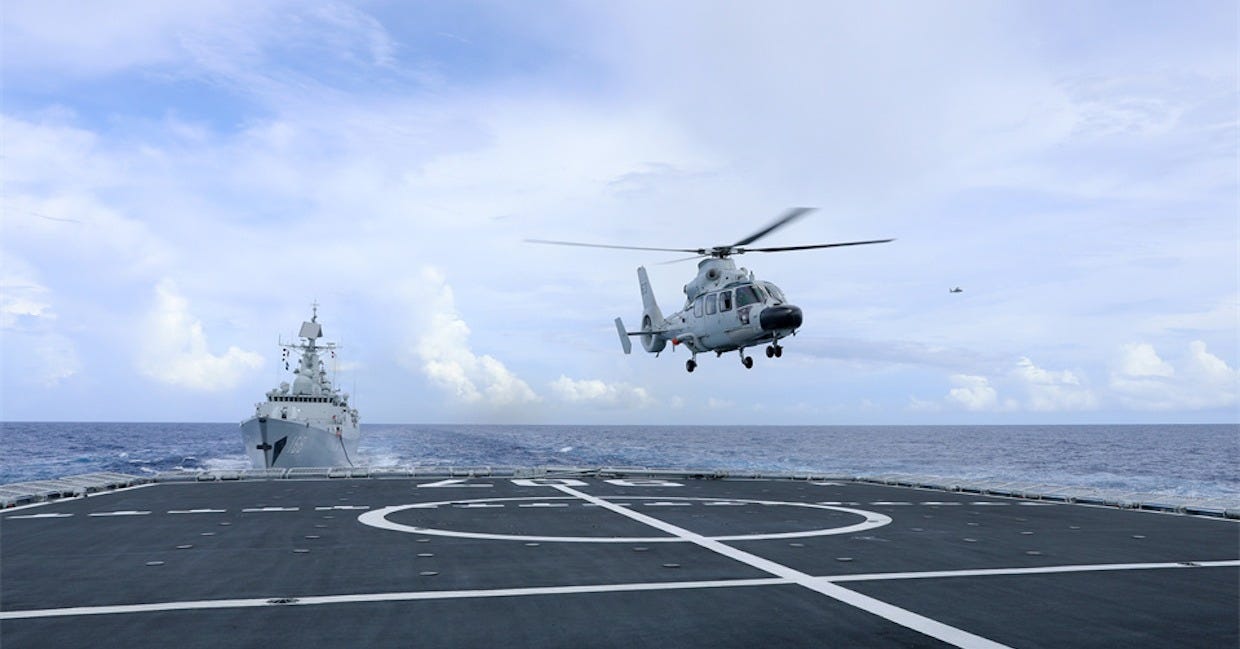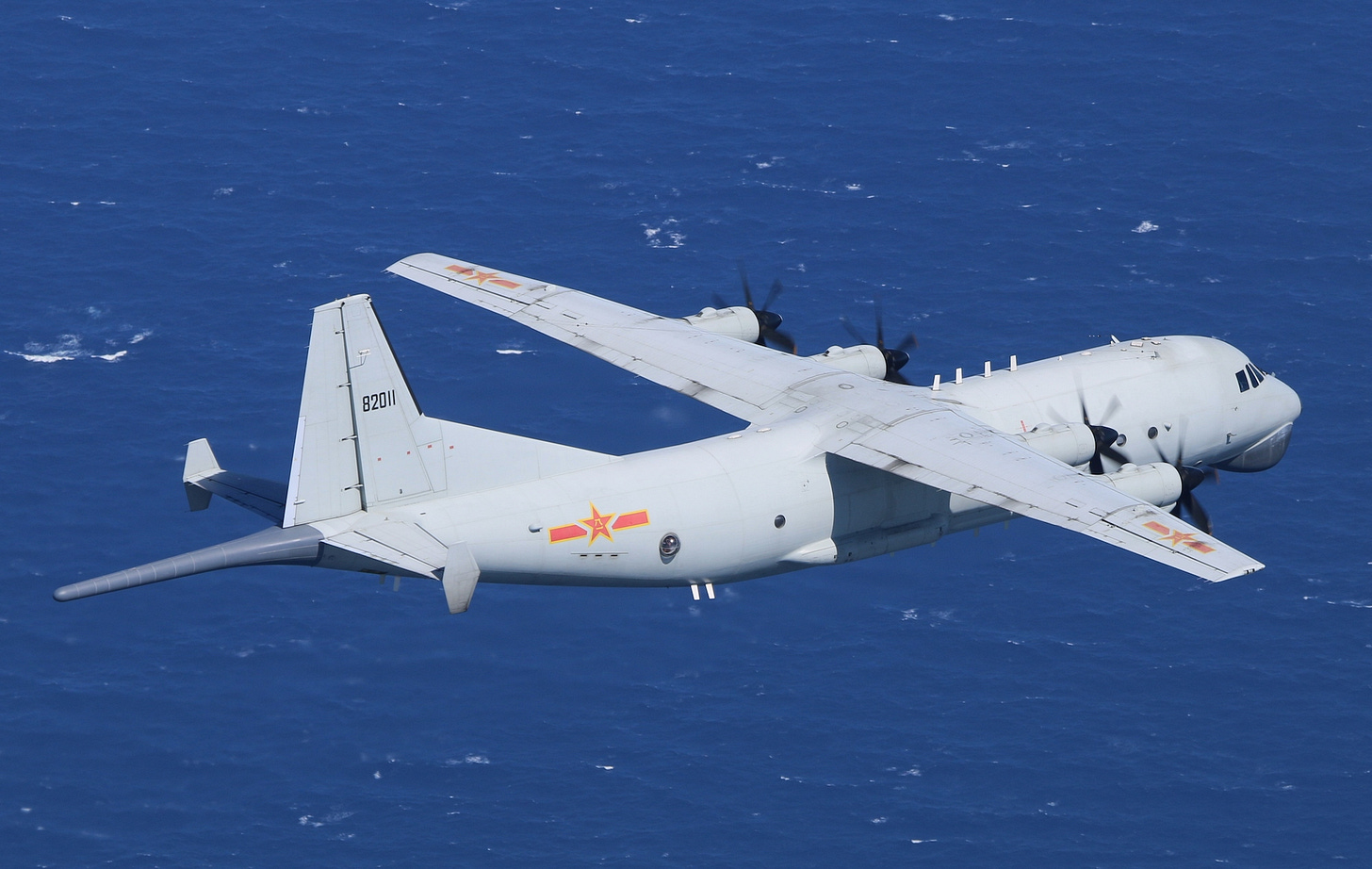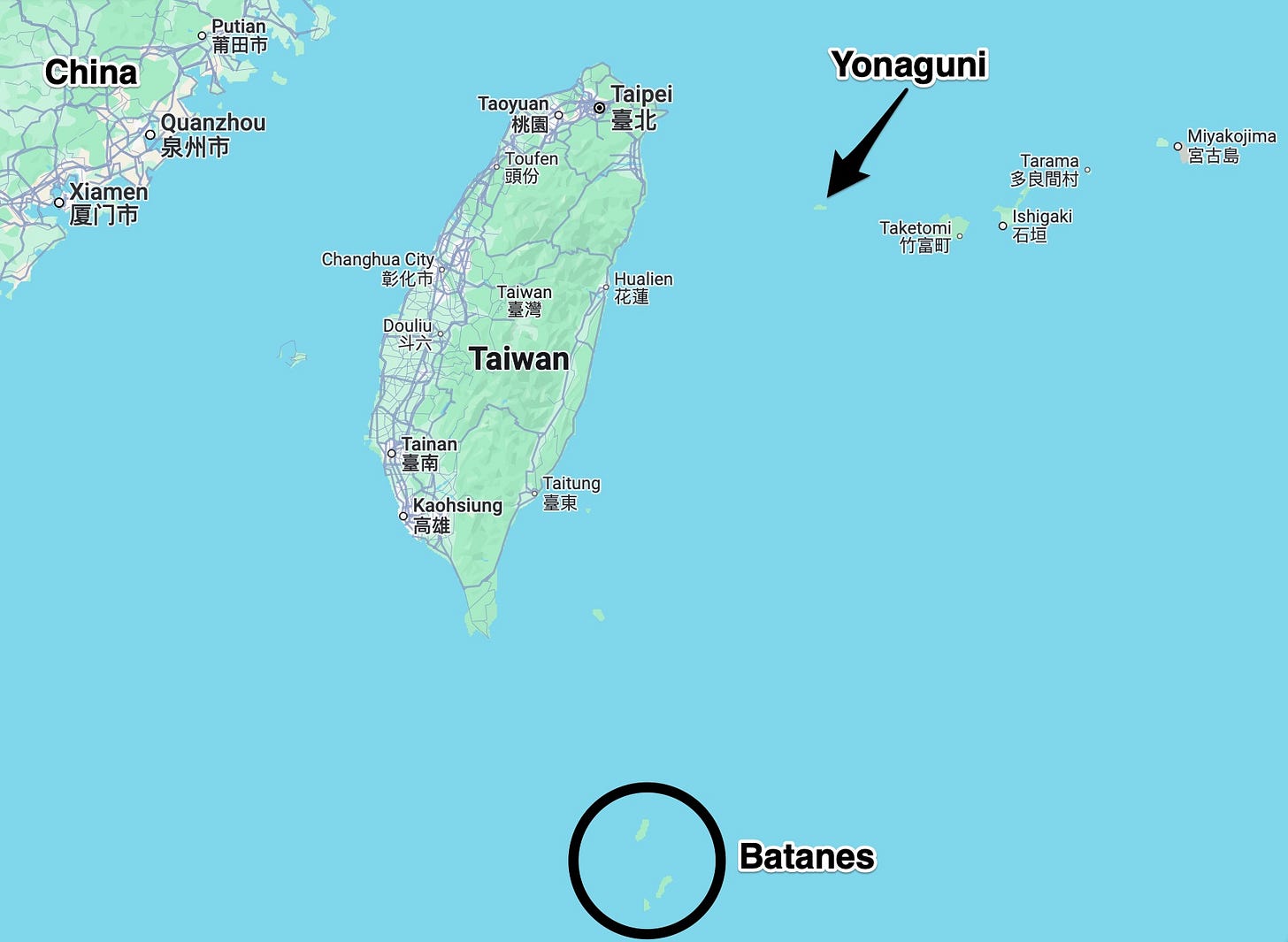China’s military is stepping up its training in vital waterways around Taiwan
China's near-daily military operations around Taiwan are often overlooked, but they hint at what Beijing has planned for the island.
BANGKOK — Scores of Chinese military aircraft and ships circled Taiwan on October 14 in a major exercise following Taiwanese President Lai Ching-te's National Day speech on October 10, again demonstrating Beijing's rejection of what it sees as pro-independence leadership on an island it claims as its territory.
The Joint Sword 2024B exercise follows the Joint Sword 2024A exercise held after Lai’s inauguration in May. Those drills — like Joint Sword in April 2023 or the exercises following Nancy Pelosi’s visit to Taiwan in August 2022 — captured worldwide attention for their scale and intensity.
China’s large-scale drills often overshadow its near-daily operations around Taiwan, which appear designed to improve its military’s ability to encircle and isolate the island, a key component of any plan to force Taiwan’s unification with the mainland and prevent outside intervention.
Those straits “are critical pathways for China to enter the Pacific” and Beijing aims “to fully leverage” them in wartime, Gen. Heng-Pu Hsu, vice minister for armaments at Taiwan’s Ministry of National Defense, said in September.
’Preparation of the battlefield’
Joint Sword 2024B lasted 13 hours, shorter than the two-day Joint Sword 2024A, but was more intense and repeated elements of the first exercise — like joint navy-coast guard operations and maneuvers around Taiwan’s outlying islands — that worried observers. As with Joint Sword 2024A, Chinese officials identified zones where the exercise would be focused, covering areas southwest, north, and east of Taiwan that face important military bases and ports and are vital air and maritime corridors.
To the south, the Bashi Channel connects the Taiwan Strait and South China Sea to the Pacific. To the north and east, the East China Sea is linked to the Pacific by straits between Japan’s Southwest Islands. China’s interest in those areas has been increasingly visible since September 2020, when Taiwan began publishing reports on activity in its Air Defense Identification Zone, which is not territorial airspace but is monitored for intrusions.
Those reports illustrated growing Chinese air activity in the southwest portion of the ADIZ, which covers the Bashi Channel, and showed that China’s Y-8 anti-submarine-warfare aircraft was a frequent flier. ADIZ reports compiled by the PLA Tracker project show at least one Y-8 was spotted on most days between September 16, 2020 and January 15, 2024, when Taiwan limited aircraft identifications in its reports.
In a crisis or war, the Bashi Channel would be a prime corridor for Chinese submarines deploying to intercept ships headed for Taiwan or to attack US and allied forces. The frequent presence of ASW aircraft over the channel reflected China’s desire to better understand water conditions there, US and Taiwanese experts told me in spring 2021. While Taiwan has released less information about China’s air activity this year, its reports show that China's naval activity, including ASW training, to the island’s east is growing.
Data compiled by the Taiwan-based Research Project on China's Defense Affairs shows that Chinese navy ship-borne helicopters were active southwest of Taiwan on 26.6% of days this year as of August 25, down from 36.7% of days in 2023. East of Taiwan, those helicopters were active 90.6% of days this year, up from 65.6% in 2023.
That shift indicates that Chinese warships are spending more time in those waters, further taxing Taiwanese forces assigned to monitor them, and suggests the helicopters are training to hunt enemy subs or working with Chinese subs to improve their ability to operate there, RPCDA scholars wrote in September.
Since Taiwan would likely relocate much of its navy, including its new submarines, to its east coast in the event of a war, China’s ASW training there “appear[s] to be aimed at the preparation of the battlefield within Taiwan’s wartime preservation zone,” the scholars wrote. “By searching for and engaging submarines from Taiwan or other countries, or by coordinating with [Chinese] submarines to attack Taiwanese naval vessels, these activities seriously threaten Taiwan’s ability to preserve its naval combat capacities.”
The Chinese navy’s focus on operating east of Taiwan is evident in its transits near Yonaguni Island, which is Japan’s southwestern-most island and is less than 70 miles from Taiwan. According to Japan’s Defense Ministry, Chinese navy ships have sailed between Yonaguni and Taiwan 18 times this year as of August 25, topping the nine transits in 2023 and 11 in 2022.
This year’s transits have been by major surface warships, and the increase near Yonaguni comes alongside a decrease in the Miyako Strait, a 250-mile-wide channel farther east, according to the RPCDA scholars, who wrote last month that transits by major warships and increased activity by China’s hydrological survey vessels suggest a deliberate effort to get familiar with and train in those waters.
That newfound emphasis was underscored on September 18, when China’s Liaoning aircraft carrier sailed between Yonaguni and Iriomote, the closest island to the east, for the first time. The carrier and two destroyers escorting it entered the contiguous zone next to Japan’s territorial waters, which Tokyo called “utterly unacceptable” and formally protested. China said it was routine training in line with international law and there was “no need” to “over-interpret it.”
Critical straits
The location of Yonaguni, a part of the Yaeyama archipelago in Japan’s Okinawa Prefecture, makes it important for military forces going east into the Pacific or moving west from the Pacific toward mainland Asia. The same is true of the Philippines’ Batanes islands on the southern edge of the Bashi Channel.
“They’re geographically proximate to Taiwan and those key waterways in which and above which [Chinese] air and naval forces would seek to transit in order to reach the Western Pacific Ocean rim area,” Collin Koh, a senior fellow at the S. Rajaratnam School of International Studies in Singapore, told me in December.
“Because they overlook these key strategic areas, not just Taiwan itself, the Batanes and Yaeyama Islands would hold the key to not only constricting or containing [China’s] military access into the Western Pacific Ocean but also to facilitate US military movement west,” Koh said.

Japan and the Philippines are both improving their military posture around their islands, working closely with the US to develop capabilities to defend them and disrupt adversaries operating near them.
Both have invested in new weapons, including anti-ship cruise missiles, and new units focused on island operations. Japan opened a new base on Yonaguni in 2016 that now hosts radars and an electronic-warfare unit and is “a crucial facility for the defense of southwestern regions,” a 2022 defense white paper said. Japan’s other islands have received new forces, such as anti-ship-missile and air-defense units, and infrastructure, like ammo depots. Tokyo is also developing evacuation plans and building shelters to protect islanders in case of attack.
The US military is also improving its posture in the Western Pacific, in part by enhancing its presence in the Philippines and Japan, to counter China. New Marine Littoral Regiments — designed to disperse and control “key maritime terrain” using anti-ship missiles and other weapons — are based in Hawaii and Okinawa and regularly train on Japan’s Southwest Islands, including Yonaguni, and in northern Luzon and Batanes in the Philippines.
The Corps’ “vision of small teams of Marines armed with Naval Strike Missiles mounted on Joint Light Tactical Vehicles” is “very innovative,” Mike Gallagher, a leading China hawk, told me on Capitol Hill in September 2023. “I think it would create a ton of targeting dilemmas for [China’s military] and enhance our ability to sink Chinese ships should they make the ill-fated decision to attempt an invasion of Taiwan.” (Gallagher resigned from Congress in April.)
Some in Japan, including Yonaguni’s mayor, and the Philippines see the military buildup as necessary to deter Chinese aggression. For many, the threat was underscored by the exercises after Pelosi's visit in 2022, when China fired ballistic missiles that landed in Japanese waters, one just 50 miles from Yonaguni.
But others in both countries are apprehensive and worry about getting caught in the crossfire of a great-power war. Some Japanese islanders have protested visits by US warships. Okinawa Prefecture Gov. Denny Tamaki, a longtime critic of the US presence there, opposed Amb. Rahm Emanuel’s visit to Yonaguni in May, saying that traveling to “an area near Taiwan increases the tension."
Despite those concerns, Washington, Tokyo, Manila, and Taipei see the islands and straits around Taiwan as essential access points in the Western Pacific and are unlikely to change course. Nor is Beijing — Japan said this week that two Chinese warships sailed south between Yonaguni and Taiwan on October 9 and returned north through the Miyako Strait on October 15.









